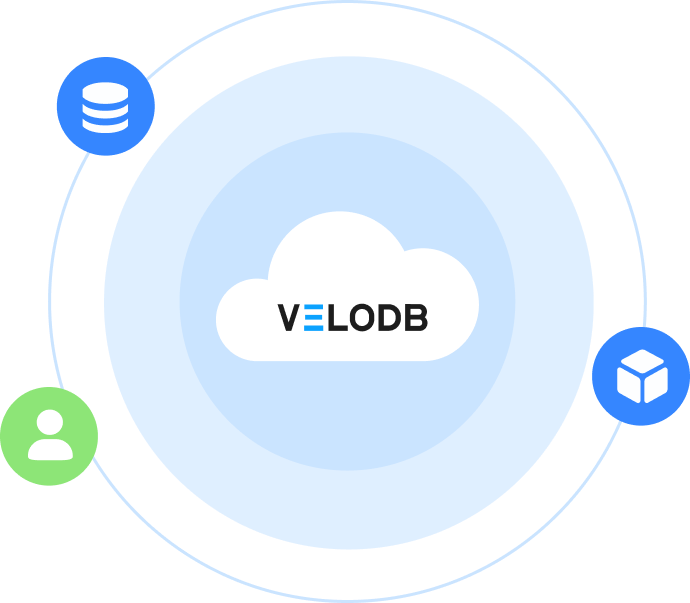What is Vector Search?
Vector search is a modern search technique that enables finding similar items by converting data into high-dimensional numerical representations called vectors or embeddings. Unlike traditional keyword-based search that matches exact terms, vector search understands semantic meaning and context, allowing users to find relevant content even when exact keywords don't match. This technology powers recommendation systems, similarity search, and AI applications by measuring mathematical distances between vectors in multi-dimensional space.
Why Do We Need Vector Search?
Semantic Understanding Limitations
Traditional keyword search fails to understand meaning and context, often missing relevant results when different words express the same concept. Vector search captures semantic relationships between terms and concepts.
Multimodal Data Challenges
Modern applications need to search across text, images, audio, and video content simultaneously. Vector search provides a unified approach to finding similar content across different data types using embedding models.
Contextual Relevance Requirements
Users expect search results that understand intent and context rather than literal keyword matches. Vector search enables finding conceptually similar content based on meaning rather than exact terms.
AI-Powered Application Needs
Modern AI applications like recommendation engines, RAG systems, and chatbots require sophisticated similarity matching that goes beyond simple text matching to understand relationships and patterns in data.
Vector Search Architecture
Embedding Generation Process
Vector search begins with converting raw data (text, images, audio) into numerical vectors using machine learning models that capture semantic meaning and relationships.
Text Embeddings: Language models like BERT, OpenAI's text-embedding-ada-002, or Sentence Transformers convert text into dense vectors that represent semantic meaning.
Multimodal Embeddings: Specialized models like CLIP create vectors that capture relationships between different data types, enabling cross-modal search capabilities.
Vector Database Storage
High-dimensional vectors are stored in specialized databases optimized for similarity search, with indexing structures that enable fast approximate nearest neighbor (ANN) search.
Similarity Calculation
Vector similarity is measured using distance metrics such as cosine similarity, Euclidean distance, or dot product to find the most relevant results based on mathematical proximity.
Key Features of Vector Search
Semantic Similarity
Vector search understands context and meaning, finding relevant results even when query terms don't exactly match document content, enabling more intuitive and intelligent search experiences.
Cross-Modal Search Capabilities
Unified vector space allows searching for images using text descriptions, finding similar sounds, or discovering related content across different media types within a single system.
Real-Time Performance
Advanced indexing algorithms like HNSW (Hierarchical Navigable Small World) and IVF (Inverted File) enable sub-second search responses even across millions of vectors.
Scalability and Efficiency
Approximate nearest neighbor algorithms balance accuracy with speed, making vector search practical for large-scale applications while maintaining acceptable precision levels.
Personalization Support
Vector representations can incorporate user preferences and behavior patterns, enabling personalized search results and recommendation systems tailored to individual needs.
Common Use Cases for Vector Search
Recommendation Systems
E-commerce platforms, streaming services, and social media use vector search to recommend products, content, or connections based on user behavior and similarity patterns.
Retrieval-Augmented Generation (RAG)
AI systems use vector search to find relevant information from knowledge bases, enabling more accurate and contextual responses from large language models.
Document and Content Discovery
Organizations use vector search to find similar documents, research papers, or content pieces based on semantic similarity rather than keyword matching.
Image and Visual Search
Applications enable users to find similar images, products, or visual content by uploading photos or using text descriptions to search image databases.
Customer Support and Chatbots
Vector search powers intelligent support systems that can find relevant solutions and answers based on user queries' semantic meaning and context.
Implementation Examples (Apache Doris)
Basic Vector Search with Doris (SentenceTransformers)
CREATE TABLE IF NOT EXISTS kb_docs (
id BIGINT,
title STRING,
content TEXT,
embedding ARRAY<FLOAT>, -- vector column
updated_at DATETIME
)
DUPLICATE KEY(id)
DISTRIBUTED BY HASH(id) BUCKETS 8
PROPERTIES ("replication_allocation"="tag.location.default: 1");
# pip install pymysql sentence-transformers
import pymysql, json
from sentence_transformers import SentenceTransformer
enc = SentenceTransformer("sentence-transformers/all-MiniLM-L6-v2")
def arr(v): # Doris ARRAY<FLOAT> literal
return "[" + ",".join(f"{x:.6f}" for x in v) + "]"
conn = pymysql.connect(host="127.0.0.1", port=9030, user="root",
password="", database="rag", autocommit=True)
cur = conn.cursor()
def add_documents(docs):
"""
docs = [{"id":1,"title":"...","content":"..."},
{"id":2,"title":"...","content":"..."}]
"""
for d in docs:
emb = enc.encode(d["content"]).tolist()
sql = f"""INSERT INTO kb_docs (id,title,content,embedding,updated_at)
VALUES ({d["id"]}, %s, %s, {arr(emb)}, NOW())"""
cur.execute(sql, (d["title"], d["content"]))
def vector_search(query, top_k=5):
q = enc.encode(query).tolist()
ql = arr(q)
sql = f"""
SELECT id, title, content,
cosine_distance(embedding, {ql}) AS dist
FROM kb_docs
WHERE embedding IS NOT NULL
ORDER BY dist ASC
LIMIT {top_k}
"""
cur.execute(sql)
return cur.fetchall()
# Usage
add_documents([
{"id":1,"title":"Intro to ML","content":"Machine learning algorithms process large datasets."},
{"id":2,"title":"AI & Business","content":"AI transforms business operations via automation."},
{"id":3,"title":"NLP","content":"Natural language processing enables human-computer interaction."}
])
for r in vector_search("AI and business automation", top_k=3):
print(r)
Production Integration with LangChain (Doris VectorStore)
# pip install -U langchain langchain-community langchain-openai pymysql
from langchain_community.vectorstores.apache_doris import ApacheDoris, ApacheDorisSettings
from langchain_openai import OpenAIEmbeddings
from langchain_text_splitters import RecursiveCharacterTextSplitter
from langchain_community.document_loaders import TextLoader
# Prepare splits
splits = RecursiveCharacterTextSplitter(chunk_size=800, chunk_overlap=150)\
.split_documents(TextLoader("kb.txt").load())
# Doris connector
cfg = ApacheDorisSettings(host="127.0.0.1", port=9030, username="root",
password="", database="rag", table="kb_docs")
# Create/update vectors directly in Doris
store = ApacheDoris.from_documents(splits, OpenAIEmbeddings(), config=cfg)
# Perform retrieval (similarity search)
docs = store.similarity_search("artificial intelligence automation", k=4)
for d in docs:
print(d.page_content[:120], "...")
Key Takeaways
Vector search revolutionizes information retrieval by understanding semantic meaning rather than relying on exact keyword matches. This technology enables more intuitive and intelligent search experiences across text, images, and multimodal content. The combination of machine learning embeddings with optimized vector databases creates powerful search systems that understand context, relationships, and user intent. As AI applications become more sophisticated, vector search serves as a foundational technology for recommendation systems, RAG implementations, and semantic discovery platforms. Organizations implementing vector search gain the ability to unlock insights from unstructured data while providing users with more relevant and contextually appropriate results.
Frequently Asked Questions
Q: How does vector search compare to traditional text search?
A: Traditional search matches exact keywords, while vector search understands semantic meaning. Vector search can find relevant results even when query terms don't exactly match document content, providing more intuitive and comprehensive results.
Q: What types of data can be used with vector search?
A: Vector search works with text, images, audio, video, and any data that can be converted to vector embeddings. Multimodal models enable searching across different data types within unified systems.
Q: How do I choose the right embedding model?
A: Consider your data type, language requirements, accuracy needs, and performance constraints. General-purpose models like OpenAI's text-embedding-ada-002 work well for most text applications, while specialized models excel in specific domains.
Q: What's the difference between exact and approximate search?
A: Exact search guarantees finding the true nearest neighbors but is slower for large datasets. Approximate search trades small accuracy reductions for significant speed improvements, making it practical for large-scale applications.
Q: How do I measure vector search quality?
A: Common metrics include precision, recall, and NDCG (Normalized Discounted Cumulative Gain). A/B testing with users provides practical quality validation, comparing search relevance and user satisfaction.




